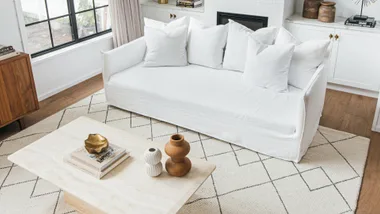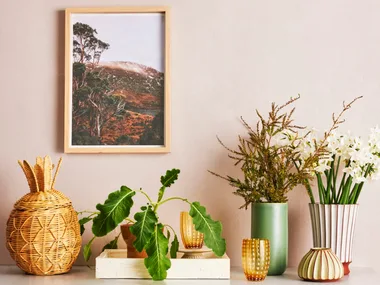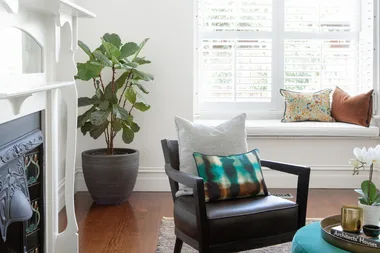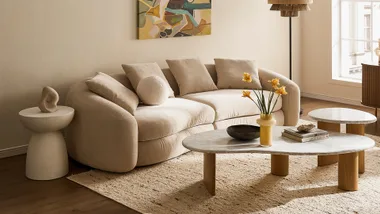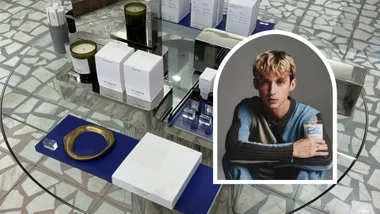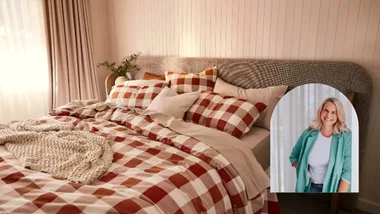The second of our three-part series on classic decorating styles, French provincial decorating remains a passion for Australian homeowners with refined details, rustic textures and washed-out colour palette.
The look (think relaxed Provence, rather than polished Paris) features powdery hues, whitewashed wood and raw timber, soft linens and texture, with an overlay of opulence: curved furniture, embroidery and gilt framing against a farmhouse-style backdrop of stone flags and milkpaint walls. This rustic-meets-refined blend has developed into a style with longevity, says interior designer Karenza Jewell. “It’s less about trends; one of the reasons it remains so popular today,” she says. “It works in new and heritage homes. In the city it gives a sense of warmth, welcoming yet still sophisticated, and in the country it fits seamlessly with provincial surroundings.”
Come with us as we take the tour.

This style’s fascinating mix dates back to 18th-century Provence and the Loire Valley, explains interiors expert Suzie Anderson, whose Moss Vale store is a rustic French provincial treasure trove. “After the French Revolution, a lot of fine pieces were stolen from chateaux and sold at brocantes,” she explains. “These finds added elegance to people’s simpler, locally produced furniture pieces.” Today, the kitchen might have as its centrepiece a farmhouse table in scrubbed oak or pine, while the living room boasts furniture with a finer profile. In the bedroom, a carved timber bed frame could be the drawcard.
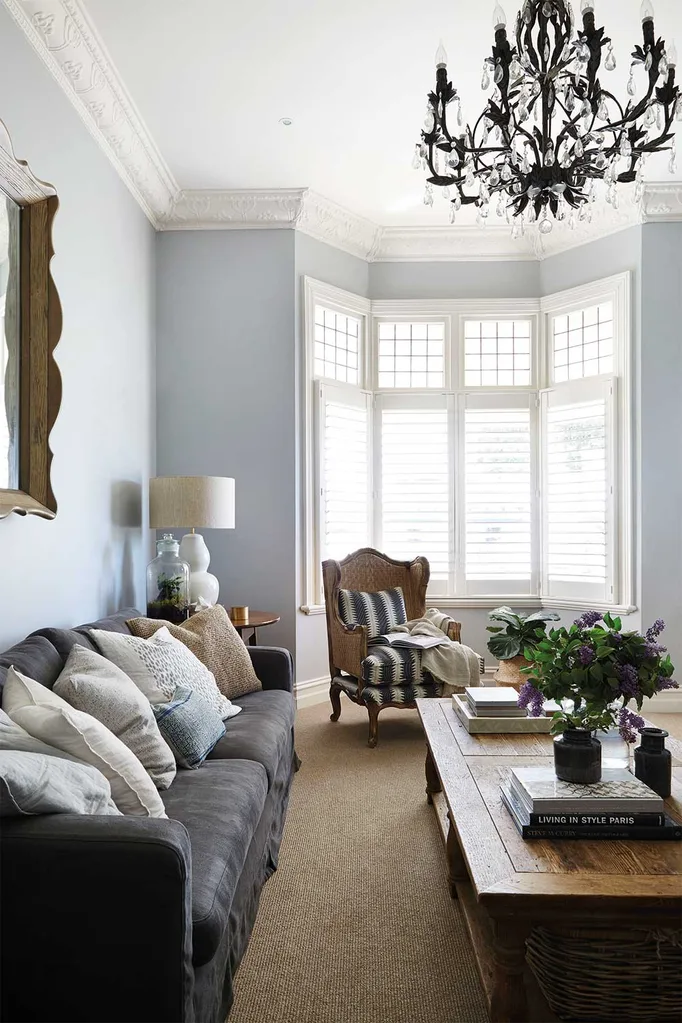
To finesse the look in your own home, search for items of furniture that make a statement. “Start with a few key pieces such as an antique timber dresser or armoire, a beautiful curvy armchair, that solid timber dining table that serves for a gathering or a work table, and an interesting candelabra,” suggests Karenza.
“Don’t forget the curvaceous armchair with quality feather and foam cushions to sink into, finished with carved timber legs and a nature-inspired fabric or heavyweight stone-washed linen.”
Karenza Jewell, Interior Designer
In the details
Accessories that bring a touch of Versailles are a chic complement, such as an oversized mirror with a gilded or distressed-timber frame, or repurposed architectural items.
“Old stone or timber balustrades converted to lamp bases; wrought iron fencing used for bedheads; shutters used decoratively,” lists Suzie. Wicker references classic farmhouse style, as do rustic metal objets d’art. Also try curtain poles with filigree tips, porcelain door handles and pretty light pulls, adds Karenza. “It wouldn’t have been easy to bury cabling into old French walls when electricity was first introduced.”
Fabric of life
For background materials, think building products that would have been readily available in the Provençal countryside in the 1700s, such as raw plaster or walls painted with natural pigments, exposed timber beams, and flagstone or timber flooring. Get the look with flat matt wall paint and reclaimed floorboards that show the grain.
“This mimics the age-worn timber floors of 18th-century French country homes,” explains Karenza. “Often the floorboards are wider, depending on the local tree type.”
“Sage greens and lilacs with an array of whites and warm neutrals offer the perfect French provincial palette.”
Wendy Rennie, Haymes Paint
Pick your palette
Historically, colours would have been soft whites or tones drawn from the surrounding landscape. Today, “Colours are muted because of the need to let the beauty of the overall style shine through,” explains Wendy Rennie of Haymes Paint. “The look for interiors is focused on a monochromatic scheme and the paint used is a matt finish to complement the natural look.”
White is often the go-to, with the undertone leaning towards the warmer spectrum, complementing the mid-tone timbers used in flooring and furniture. “Colours are introduced in small volume, which may be a blue line in a natural linen, or a dark grey on the clawfoot bath,” explains Dulux’s Andrea Lucena-Orr. “Colour schemes are based on tonal hues, so look at Dulux Natural White with variations of this. Soft beiges can also be used along with greiges with warmer tones, such as Dulux White Exchange Half. This style can create an elegant look for an Australian home.”
The current trend for powdery shades with a grey undertone is also pitch perfect for a modern-day interpretation of the look. Interiors expert Suzie Anderson suggests muted, feminine colour palettes of white, soft grey, celadon/sage green, duck-egg blue and ochre. “Colour is still subdued enough to fit within everyday living,” adds Wendy Rennie.
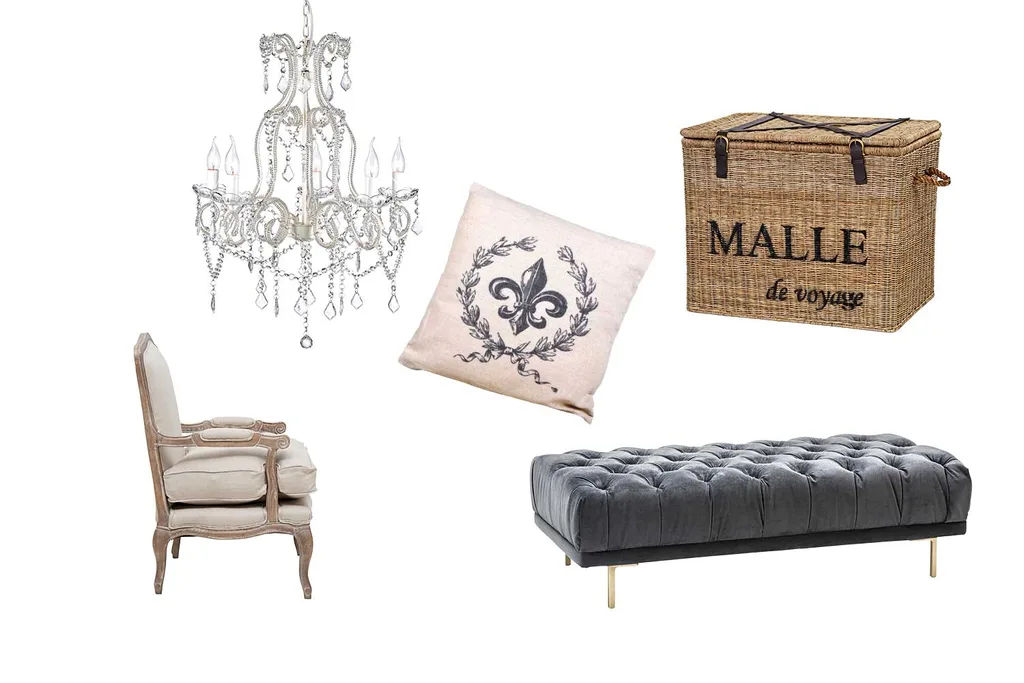
Clockwise from top left: “Shabby Paris’ -light chandelier in white, $239, Temple & Webster | Road to Home ‘Floral’ cushion in Beige, $29.95, Temple & Webster | ‘Malle de Voyage’ trunk, $549, Villa Maison | ‘Hartleigh’ diamond buttoned ottoman, from $1699, Sheridan | ‘Isla’ armchair, $899, Oz Design Furniture
Go here for Part 1 of our Decorating Masterclass: How to get Scandi Style

